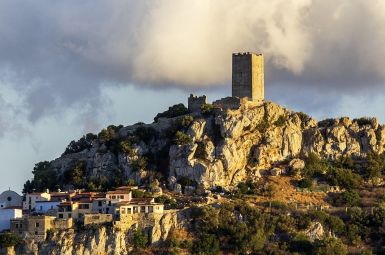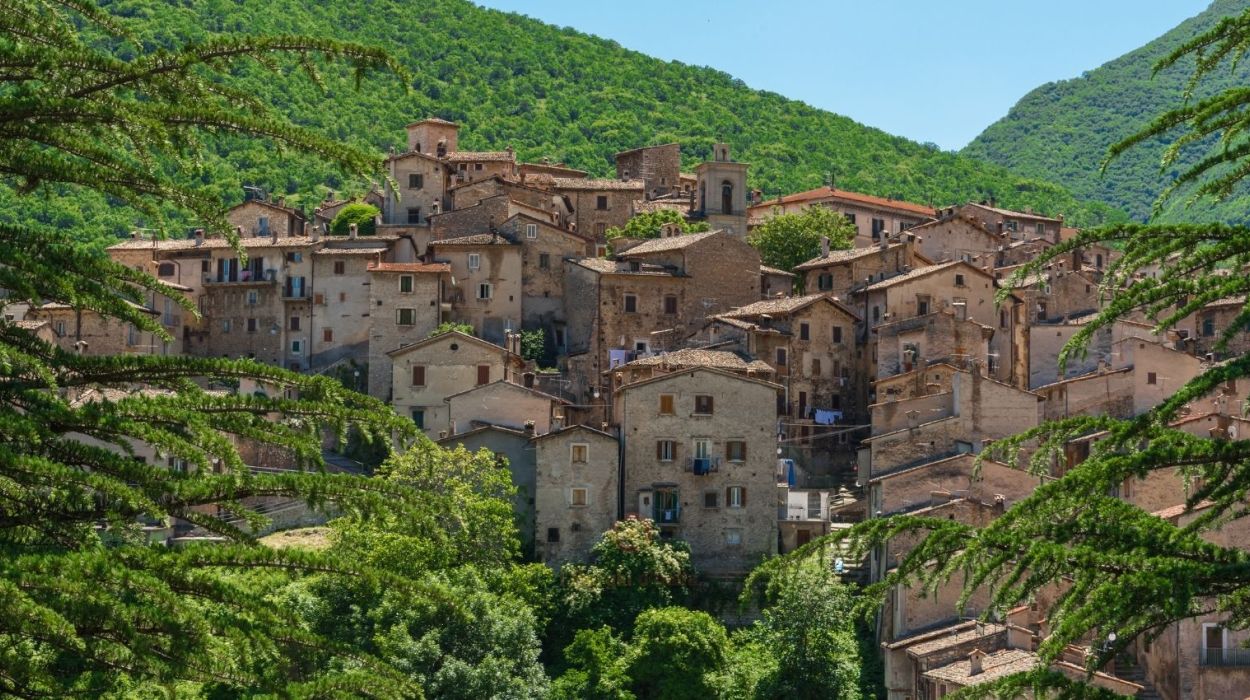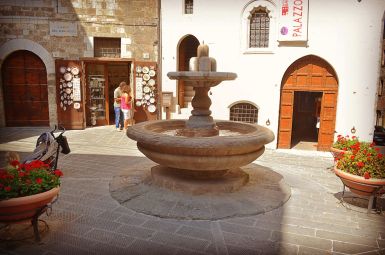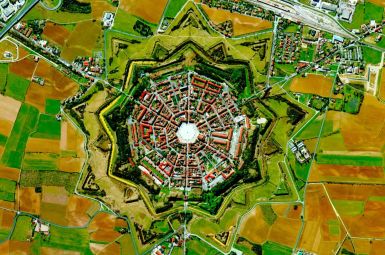
Il Borgo di Scanno
Scanno Segreta: Il Cuore Magico dell’Abruzzo e i Tesori Sospesi nel Tempo
Scanno (AQ) non è semplicemente un “borgo tra i monti”; è un’autentica macchina del tempo, un’oasi di tradizioni secolari e misteri naturali incastonata nella Valle del Sagittario, a un passo dal Parco Nazionale d’Abruzzo. La sua fama, immortale grazie ai grandi fotografi che l’hanno ritratta, si nutre di curiosità che spaziano dalla geologia alla moda, dal cinema alla politica. Ecco le curiosità che rendono Scanno, Bandiera Arancione del Touring Club Italiano, una destinazione di fascino e mistero.1. Il Lago a Forma di Cuore e le Leggende Sospese
Il Lago di Scanno è la meraviglia naturale più celebre, ma la sua forma iconica (visibile solo da specifici punti panoramici, come il Sentiero del Cuore o la località Frattura) nasconde storie affascinanti.- Nascita Geologica: Scientificamente, il lago è il più grande lago naturale dell’Abruzzo ed è un lago di sbarramento, formatosi migliaia di anni fa a causa di un’enorme frana staccatasi dal Monte Genzana che bloccò il corso del fiume Tasso.
- Il Mistero di Angiolina: La leggenda, però, preferisce la magia. Si narra che il lago si sia formato per incantesimo di una Fata, Madama Angiolina, che per sfuggire al rapimento da parte del potente Mago Baialardo, fece materializzare il lago sotto i loro piedi, inghiottendo i rapitori.
2. Il Costume Tradizionale: Un Enigma di Taffetà
Le donne di Scanno sono famose per indossare ancora quotidianamente, o in occasioni speciali come il “Ju Catenacce” (la rievocazione del matrimonio scannese), un costume tradizionale unico.- L’Ispirazione Orientale: Il vestiario, in particolare il copricapo chiamato Ju cappellitte o tocca, ha suscitato dibattiti tra gli studiosi. Alcuni ritengono che la sua particolare foggia, simile a un turbante, possa essere un retaggio arabeggiante o spagnolo, giunto qui grazie alle antiche vie commerciali o alla dominazione del Regno delle Due Sicilie.
- Lavorazione Orafa e Merletti: Scanno è storicamente un centro di eccellenza per l’oreficeria (famosa la Presentosa, un gioiello d’Abruzzo donato alle future nuore) e per il tombolo, un’antica arte di merletto che testimonia la ricchezza artigianale e l’isolamento virtuoso del borgo.
3. La Città dei Fotografi Immortali
L’incomparabile bellezza dei vicoli, delle scale (cemmause) e dei loggiati di Scanno è stata immortalata da alcuni dei più grandi nomi della fotografia mondiale.- Il Trio d’Oro: Fotografi del calibro di Henri Cartier-Bresson, Mario Giacomelli e Gianni Berengo Gardin hanno scelto Scanno come scenario per i loro scatti più iconici, trasformando il borgo in un set a cielo aperto di arte e storia. La celebre foto della “bambina di Scanno” di Bresson è una delle immagini più rappresentative del dopoguerra italiano.
4. Il Rifugio di un Presidente e L’Orso Marsicano
Scanno è stata, per la sua posizione defilata, un rifugio in momenti cruciali della storia italiana e lo è tuttora per la fauna selvatica.- Carlo Azeglio Ciampi: Durante la Seconda Guerra Mondiale, il futuro Presidente della Repubblica Italiana, Carlo Azeglio Ciampi, rifiutò di aderire alla Repubblica Sociale Italiana e trovò rifugio proprio a Scanno, ospite di una famiglia del luogo, prima di arruolarsi. Anni dopo, la città lo ha insignito della cittadinanza onoraria.
- Il Parco Nazionale: La vicinanza al Parco Nazionale d’Abruzzo, Lazio e Molise rende frequenti gli sconfinamenti di fauna selvatica. Non è raro, per gli abitanti e i visitatori più attenti, avvistare cervi o tracce dell’Orso Bruno Marsicano nei dintorni del paese.
Scanno non si limita a mostrarsi, si svela lentamente. Sei pronto a addentrarti nei suoi vicoli per scoprire i segreti custoditi tra la montagna e il cuore del lago?

Il Borgo d’Italia
tutto da scoprire ed esplorare
Monumenti
Scanno Monumentale: Dove l’Architettura Incontra l’Arte e la Storia Pastorale
Scanno (AQ), avvolto dal paesaggio mozzafiato del Parco Nazionale d’Abruzzo, Lazio e Molise, non è un borgo di imponenti fortezze o cattedrali gotiche. La sua monumentalità risiede nell’armonia perfetta tra l’architettura civile e la sua storia secolare. Qui, i veri monumenti sono i dettagli, le chiese custodi di arte preziosa, e la stessa trama urbana che si arrampica sul costone roccioso.
A Scanno, ogni pietra racconta di una ricca tradizione pastorale e di un’eleganza discreta che ha incantato i grandi fotografi internazionali.
1. Il Borgo Antico: L’Architettura che è Monumento
Il centro storico di Scanno è un labirinto di vicoli, scale e palazzi che rappresentano il suo monumento più esteso e significativo.
- Le Cemmàuse: Simbolo dell’urbanistica scannese sono le cemmàuse, le caratteristiche scalinatone esterne in pietra che conducono ai piani superiori delle abitazioni. Questi elementi, unici per la loro funzione e il loro design robusto, sono l’emblema della vita verticale del borgo.
- I Loggiati e i Portali: Passeggiando, si ammirano i loggiati aperti che ornano i palazzi nobiliari (Palazzo Di Rienzo, Palazzo Delli Quadri), testimoniando l’antica ricchezza del paese basata sul commercio della lana. I portali in pietra scolpita, spesso decorati con stemmi e iscrizioni, sono vere e proprie opere d’arte popolare diffuse.
2. Le Architetture Religiose: Custodi di Tesori
Nonostante le dimensioni, Scanno ospita diverse chiese di grande valore storico e artistico, scrigni di fede e bellezza.
- Chiesa Madre di Santa Maria della Valle: Il principale luogo di culto, risalente all’epoca medievale ma rimaneggiato nel tempo. Il suo imponente campanile romanico e l’interno barocco-rinascimentale ne fanno il cuore spirituale del borgo.
- Chiesa di San Giovanni Battista: Un’altra perla, famosa per il suo suggestivo portale romanico e gli interni che custodiscono opere d’arte sacra, tra cui pregevoli statue lignee e tele.
- Chiesa di Santa Maria Annunziata: Nota per la sua facciata in pietra e la sua architettura elegante, è un punto di riferimento visivo all’interno del centro storico.
3. L’Eremo e la Chiesetta: Fede e Panorama
I monumenti non si limitano al centro abitato, ma si estendono ai punti panoramici e ai luoghi di ritiro spirituale.
- Eremo di Sant’Egidio: Una piccola chiesetta in posizione isolata e panoramica, raggiungibile a piedi lungo il sentiero che offre la migliore visuale sul Lago di Scanno a forma di cuore. Non è solo un luogo di culto, ma un monumento al silenzio e all’armonia tra fede e natura.
- Chiesa della Madonna del Lago: Situata sulle sponde del lago omonimo, questa piccola chiesa è legata alle leggende del luogo e rappresenta un punto di ritrovo iconico per i visitatori, unendo la spiritualità al paesaggio lacustre.
A Scanno, la monumentalità è una questione di prospettiva. È la ricchezza che si nasconde dietro i portali in pietra, l’arte custodita nelle chiese e la storia scolpita nelle cemmàuse. Sei pronto a esplorare questa bellezza discreta e sorprendente?
Curiosità
Scanno Segreta: Il Cuore Magico dell’Abruzzo e i Tesori Sospesi nel Tempo
Scanno (AQ) non è semplicemente un “borgo tra i monti”; è un’autentica macchina del tempo, un’oasi di tradizioni secolari e misteri naturali incastonata nella Valle del Sagittario, a un passo dal Parco Nazionale d’Abruzzo. La sua fama, immortale grazie ai grandi fotografi che l’hanno ritratta, si nutre di curiosità che spaziano dalla geologia alla moda, dal cinema alla politica.
Ecco le curiosità che rendono Scanno, Bandiera Arancione del Touring Club Italiano, una destinazione di fascino e mistero.
1. Il Lago a Forma di Cuore e le Leggende Sospese
Il Lago di Scanno è la meraviglia naturale più celebre, ma la sua forma iconica (visibile solo da specifici punti panoramici, come il Sentiero del Cuore o la località Frattura) nasconde storie affascinanti.
- Nascita Geologica: Scientificamente, il lago è il più grande lago naturale dell’Abruzzo ed è un lago di sbarramento, formatosi migliaia di anni fa a causa di un’enorme frana staccatasi dal Monte Genzana che bloccò il corso del fiume Tasso.
- Il Mistero di Angiolina: La leggenda, però, preferisce la magia. Si narra che il lago si sia formato per incantesimo di una Fata, Madama Angiolina, che per sfuggire al rapimento da parte del potente Mago Baialardo, fece materializzare il lago sotto i loro piedi, inghiottendo i rapitori.
2. Il Costume Tradizionale: Un Enigma di Taffetà
Le donne di Scanno sono famose per indossare ancora quotidianamente, o in occasioni speciali come il “Ju Catenacce” (la rievocazione del matrimonio scannese), un costume tradizionale unico.
- L’Ispirazione Orientale: Il vestiario, in particolare il copricapo chiamato Ju cappellitte o tocca, ha suscitato dibattiti tra gli studiosi. Alcuni ritengono che la sua particolare foggia, simile a un turbante, possa essere un retaggio arabeggiante o spagnolo, giunto qui grazie alle antiche vie commerciali o alla dominazione del Regno delle Due Sicilie.
- Lavorazione Orafa e Merletti: Scanno è storicamente un centro di eccellenza per l’oreficeria (famosa la Presentosa, un gioiello d’Abruzzo donato alle future nuore) e per il tombolo, un’antica arte di merletto che testimonia la ricchezza artigianale e l’isolamento virtuoso del borgo.
3. La Città dei Fotografi Immortali
L’incomparabile bellezza dei vicoli, delle scale (cemmause) e dei loggiati di Scanno è stata immortalata da alcuni dei più grandi nomi della fotografia mondiale.
- Il Trio d’Oro: Fotografi del calibro di Henri Cartier-Bresson, Mario Giacomelli e Gianni Berengo Gardin hanno scelto Scanno come scenario per i loro scatti più iconici, trasformando il borgo in un set a cielo aperto di arte e storia. La celebre foto della “bambina di Scanno” di Bresson è una delle immagini più rappresentative del dopoguerra italiano.
4. Il Rifugio di un Presidente e L’Orso Marsicano
Scanno è stata, per la sua posizione defilata, un rifugio in momenti cruciali della storia italiana e lo è tuttora per la fauna selvatica.
- Carlo Azeglio Ciampi: Durante la Seconda Guerra Mondiale, il futuro Presidente della Repubblica Italiana, Carlo Azeglio Ciampi, rifiutò di aderire alla Repubblica Sociale Italiana e trovò rifugio proprio a Scanno, ospite di una famiglia del luogo, prima di arruolarsi. Anni dopo, la città lo ha insignito della cittadinanza onoraria.
- Il Parco Nazionale: La vicinanza al Parco Nazionale d’Abruzzo, Lazio e Molise rende frequenti gli sconfinamenti di fauna selvatica. Non è raro, per gli abitanti e i visitatori più attenti, avvistare cervi o tracce dell’Orso Bruno Marsicano nei dintorni del paese.
Scanno non si limita a mostrarsi, si svela lentamente. Sei pronto a addentrarti nei suoi vicoli per scoprire i segreti custoditi tra la montagna e il cuore del lago?
Personaggi
Scanno: I Grandi Nomi Nati nel Cuore dell’Abruzzo
Scanno (AQ), con la sua storia millenaria e il suo paesaggio iconico, ha saputo infondere nei suoi figli un carattere unico, fatto di tenacia montana e fervore intellettuale. Sebbene le sue vie siano state immortalate da fotografi di fama mondiale, il borgo ha dato i natali a personalità che hanno lasciato il segno nella cultura, nella scienza e nelle istituzioni.
Ecco i personaggi più importanti e famosi che affondano le loro radici tra le montagne della Valle del Sagittario.
Domenico Giardini: Il Pittore di Scanno
Tra gli artisti più noti che hanno legato il loro nome al borgo, spicca una figura di rilievo nel panorama pittorico abruzzese.
- Maestro dell’Arte Sacra: Domenico Giardini (1780 – 1860) fu un pittore e restauratore attivo principalmente in Abruzzo e nelle regioni limitrofe. Le sue opere, spesso a tema sacro, impreziosiscono chiese e palazzi, testimoniando la ricchezza culturale e artistica che Scanno seppe sviluppare grazie alla sua importanza economica e demografica nel passato.
Eredi della Cultura: Letterati e Intellettuali
L’isolamento geografico di Scanno non ha impedito la fioritura di menti dedicate all’erudizione e allo studio.
- Figure Storiche Locali: Nel corso dei secoli, Scanno è stata culla di diversi eruditi e notai le cui opere hanno contribuito a preservare la memoria storica, le tradizioni e i dialetti della Valle del Sagittario, essenziali per la moderna conoscenza della cultura locale. Uomini come Alfonso Colarossi-Mancini (storico locale) hanno dedicato la loro vita a narrare la bellezza e la complessità del loro paese.
Scanno e il “Premio”: Un Legame con la Cultura Contemporanea
Se non direttamente nativi, diverse figure hanno avuto legami profondissimi con Scanno che ne hanno plasmato la storia culturale moderna.
- Il Premio Scanno: La città ospita il prestigioso “Premio Scanno”, una manifestazione culturale di grande rilievo, fondata da Riccardo Tanturri e dedicata a diverse categorie (dall’ecologia alla letteratura). Questo evento ha richiamato nel borgo alcune delle figure più influenti e premiate della cultura, scienza ed economia italiana e internazionale, consolidando Scanno come un punto di riferimento per l’eccellenza intellettuale.
Scanno è la prova che la grandezza non si misura in metri quadrati, ma nell’influenza lasciata dalle sue genti. Tra le pietre dei vicoli e le rive del lago, risuona ancora l’eco di questi nomi illustri. Sei pronto a scoprirne le tracce?
Ricette Tipiche
Scanno: La Cucina del Pastore e la Dolcezza della Transumanza
Scanno (AQ) sorge in un territorio dove la storia della transumanza e l’isolamento montano hanno plasmato una cucina intensamente legata ai sapori della terra, al latte, alla lana (simbolicamente) e ai boschi. Le ricette tipiche scannesi sono un inno alla semplicità, alla robustezza e alla celebrazione delle materie prime povere ma di altissima qualità, in pieno stile Parco Nazionale d’Abruzzo.
Dalle paste fatte in casa alle prelibatezze ovine e ai dolci storici, ecco i piatti che raccontano la vera essenza gastronomica di Scanno.
1. I Primi: L’Arte della Pasta Casalinga
La pasta all’uovo o di semola, lavorata a mano con maestria, è il cuore della tavola scannese.
Maccheroni alla Chitarra con Ragù d’Agnello
Il piatto simbolo dell’Abruzzo interno, dove la pasta prende forma attraverso uno strumento artigianale.
- La Tecnica: I maccheroni alla chitarra sono sfoglie di pasta fresca che vengono tagliate premendole su un telaio con fili tesi (la “chitarra”). Il risultato è una pasta a sezione quadrata, porosa, perfetta per assorbire un ricco ragù.
- Il Ragù: Il condimento ideale è un sugo di agnello o castrato (spesso in parte macinato e in parte a tocchetti) cucinato a lungo con pomodoro e aromi, che riflette l’antica vocazione pastorale del borgo.
Taccozzelle con Fagioli e Salsiccia
Un piatto che unisce la semplicità della montagna alla sapidità del maiale.
- Le Taccozzelle: Pasta corta, di forma irregolare (piccoli quadrati o losanghe), che viene sapientemente abbinata ai sapori decisi.
- Il Condimento: Un rustico e vigoroso accostamento di fagioli (spesso locali e molto teneri), soffritti con aglio, olio e pezzetti di salsiccia fresca o cotiche di maiale. Un piatto “povero” che è un concentrato di sapore.
2. I Sapori Forti: Ovinicoltura e Formaggi
Il latte di pecora e l’allevamento sono il fulcro dell’economia e della cucina di Scanno.
Pecora al Cotturo (o al Canneru)
La ricetta del pastore per eccellenza, che celebra la carne ovina in una cottura paziente.
- La Cottura Lenta: La carne di pecora (spesso anziana, più saporita) viene cotta per ore e ore in una pentola di rame (cutturo o canneru) con abbondante acqua e aromi selvatici, come erbe di montagna, patate e, a volte, un po’ di pomodoro. La cottura è talmente lenta da rendere la carne incredibilmente tenera e il brodo ricco e ristoratore.
- Formaggi e Latticini: La zona è rinomata per la produzione di formaggi a latte crudo come il Pecorino di Scanno e il Caciocavallo, spesso consumati freschi o stagionati, veri emblemi gastronomici del territorio.
3. I Dolci: L’Eredità della Pasticceria Storica
La pasticceria scannese ha una tradizione raffinata, basata su mandorle, miele e cioccolato.
Pan dell’Orso e Mostaccioli Scannesi
I due dolci più rappresentativi del borgo, perfetti come souvenir gastronomico.
- Il Pan dell’Orso: Un dolce dalla consistenza morbida, a base di miele, mandorle e burro, spesso ricoperto da una glassa al cioccolato fondente. Il nome si ispira alla leggenda secondo cui gli orsi, attirati dal profumo, ne avrebbero divorato le bisacce dei pastori.
- I Mostaccioli: Dolci secchi e robusti, ideali per essere conservati, a base di mosto cotto o miele, farina, mandorle e spezie. La loro forma e il loro sapore risentono dell’antica tradizione dolciaria del Sud Italia.
La cucina di Scanno è un’esperienza che unisce il sapore del focolare alla purezza della montagna. Sei pronto a riscoprire il gusto autentico dell’Abruzzo rurale?


